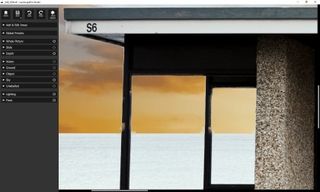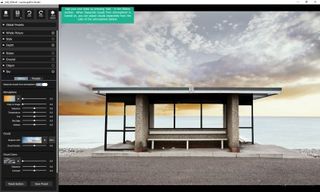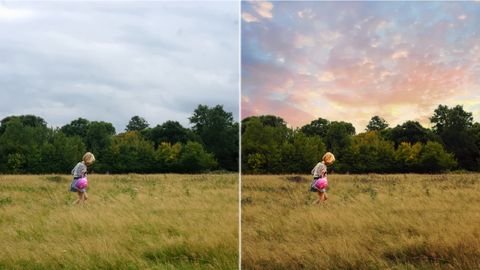TechRadar Verdict
LandscapePro won't appeal to everyone, but Anthropics Technology has done an impressive job. Masking is intelligent, and for the most part fairly reliable, although the software can struggle to produce reliable masks of complex subjects, and the software offers beginners and enthusiasts alike the confidence to make dramatic and highly effective adjustments.
Pros
- +
Mask creation simple
- +
Potential for major adjustments
- +
Good value
Cons
- -
Can be time-consuming to use
- -
Struggles with complex masks
- -
Still needs refining
Why you can trust TechRadar
For many photographers, spending as much time as possible out in the field shooting is preferable to spending hours sitting in front of a computer editing their images. Powerful but easy-to-use software packages are always an attractive option when it comes to speeding up your workflow, and this is exactly what Anthropics Technology aims to offer with LandscapePro.
LandscapePro is designed to be used by beginners and experienced photographers alike, and its makers claim that no previous experience of image editing is required in order to achieve great results in seconds.
The software aims to cover all the key areas of landscape image processing. You can replace skies using a number of preset options, or load your own images for a custom result.
Then there's landscape relighting, 3D depth estimation, distance controls and a depth-of-field simulator, which enables you to control the depth of field in images. Most of these adjustments can be targeted to specific parts of images, with one-click presets and manual control.

Two versions of LandscapePro are available for Mac and PC: Standard (£29.95/$39.95) and Studio (£49.95/$59.95). The main differences between them are that the Studio version can read Raw and DNG files, can read and write 16-Bit TIFFs, and works as a plug-in for Photoshop, Elements and Lightroom among others.
Deciding which version will be best for you really comes down to whether you need these key features or not. At the time of writing both versions are available for half price.
Getting started
The welcome screen is simply laid out, with options to open one of your own images, open an example image, view tutorial videos online, or get help and feedback. Clicking 'Open image' takes you to the File Explorer, where you can select you image.
The interface as a whole is well laid out and generally intuitive, although beginners may be just as daunted looking at all the controls on offer as they would with other programmes when they reach the adjustments. But five minutes of experimentation will familiarise you with what's on offer.
With an image selected you then need to label the elements of the image – and this is where editing with LandscapePro quickly becomes different to editing in other software.
You have to drag labels from the main panel onto the different elements of your image, such as the sky, grass, ground, object, rocks, person and sand. At first this feels rather odd, but once you click 'Continue' everything becomes clear.
Ease of use
The on-screen hints at each step guide you through the editing process. The reason for the labelling is so that masks can be applied to specific parts of the image, enabling localised adjustments to be made. For the most part, adjusting masks requires nothing more than a left mouse-click and drag, but there are times where a little more care and attention is necessary.

There are two tools to aid with complex objects that overlap into the sky: Object In Sky and Tree & Sky. These brushes enable you to brush over the object to separate the two masks. These are both very effective – on very close inspection you may find small discrepancies, but overall they're very impressive. There are a number of other tools that also aid with masking to help you achieve the best result possible.

While the process of creating masks is simple – you just click and drag and the software intelligently identifies objects, and it's certainly much quicker that performing a similar task in Photoshop – it can still be frustrating and time-consuming. It's worth spending time refining a mask, because if your image has complex overlapping areas a poor selection will ruin some of the effects that can be applied.
Adjustments
With the masks in place it's then possible to apply global and localised adjustments to the different zones you've created within the image. This is where masking problems will reveal themselves, and if necessary you can go back to make adjustments to the mask.
Each area of the image will display a dropdown panel with a range of adjustments available; among other things you can replace the sky, relight the image, change the time of day, alter the depth of field and even add fog. And it's so easy to do all of these things and more. The most important thing is to not overcook your images – it's all too easy to get carried away.

Verdict
While this software won't appeal to everyone, Anthropics Technology has done an impressive job. Its masking features are intelligent and powerful, and arguably the most effective semi-automated solution around. For the most part the masks are fairly reliable, but problems can occur when you're working with images featuring complex areas of overlapping elements; the software can struggle to make accurate masks, and the process of refining them can be fiddly.
For beginners and enthusiasts, LandscapePro provides the power and confidence to make dramatic adjustments to landscape shots with ease. Overall it's a powerful piece of software, and one that we hope will be improved over time to make the masking process easier and more effective.

LandscapePro certainly won't break the bank – and you can always download the trial version before taking the plunge. Do take a look, because this may be the missing link in your landscape photography editing workflow – or the link you never even knew was missing.
James Abbott is a professional photographer and freelance photography journalist. He contributes articles about photography, cameras and drones to a wide range of magazines and websites where he applies a wealth of experience to testing the latest photographic tech. James is also the author of ‘The Digital Darkroom: The Definitive Guide to Photo Editing’.


